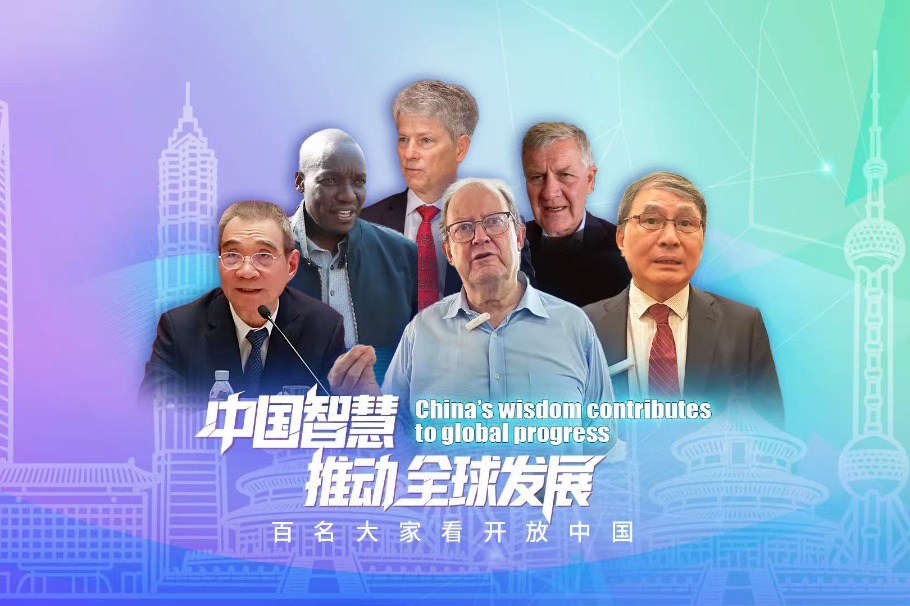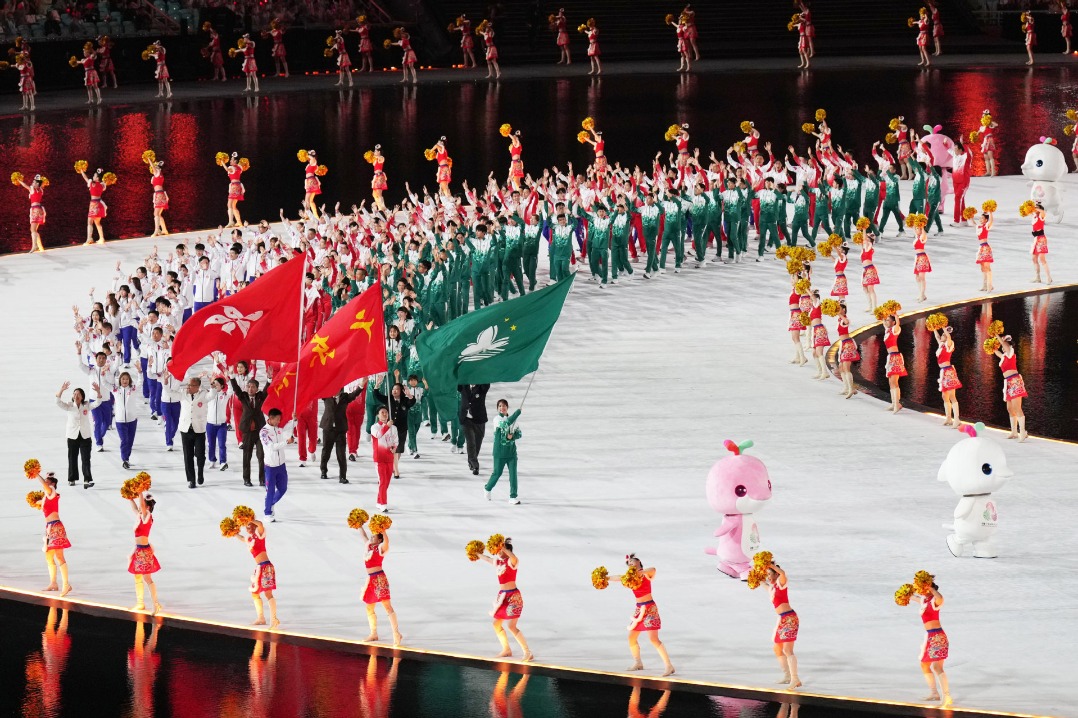STITCHING TOGETHER THE STRANDS OF CULTURE
Displays of ancient craftsmanship attract crowds at Beijing heritage showcase, Yang Feiyue reports.

Hundreds of tiny white pearl and coral beads became delicate tea flowers on a costume of Qing Dynasty (1644-1911) style under embroidery artist Bi Hong's magic touch.
"They were 1.1 to 1.2 millimeters in diameter, and had holes drilled into them before being sewn together," Bi says, introducing her work to a crowd around her stand at the Beijing International Week of Intangible Cultural Heritage in late October.
"It's an innovation on traditional culture," says the inheritor of Beijing embroidery, a form of national intangible cultural heritage. "I also used asymmetrical design to break the mold."
At the same time, the essence of the form — auspicious patterns symbolizing loyalty, purity and longevity — was retained, she adds.
Beijing embroidery, also known as palace embroidery, was primarily used for imperial clothing. Both its technique and craftsmanship emphasize harmony, smoothness, delicacy and intricacy. "It also places a strong emphasis on the nobility of style, featuring a variety of patterns and exquisite details," she says.
Over the years, Bi has made a point of preserving traditional clothing craftsmanship, while showcasing the innovative stitching process of combining nature and art in her designs. Her work features blooming flowers and falling petals, expressing the beauty of different stages in the journey of life.
At the event, she also demonstrated the meticulous stitching required to her audience, who got to appreciate the ancient art at close quarters.
"I'd really love to see more people appreciate (Chinese) culture through costumes," Bi says.
She was one of 1,000 delegates from all over the world who brought 500 intangible cultural heritage projects and 3,000 exhibits and artworks to the four-day cultural event, which consisted of sections that displayed China's efforts in protecting and supporting intangible cultural heritage, distinctive domestic handicrafts, international cultural forms and creative cultural products.
The "eight imperial handicrafts "exhibition area where Bi was sitting was composed of 29 exhibits that represented the kinds of craftsmanship that have been highly regarded and favored since the Qing Dynasty.
They include embroidery, gold lacquer and filigree inlay, imperial carpets, cloisonne, jade and lacquer carving, and are known for their exquisite craftsmanship, intricate designs and association with imperial culture.
Yuan Changjun gazed at a thin silver wire as he bent it into a triangle with a small pair of tweezers, next to a mound of seemingly hundreds of others.
"This is the basic unit that is to make patterns on big filigree items, such as orchids," says Yuan, a master artist of filigree inlay.
The silver handbag covers, vases and mythical animals on his stand were notable for their intricate, stunning patterns. Everything was done by hand, including pulling the silver thread, which can be as thin as a hair. For a long time, people were unfamiliar with the art, because it used to be exclusively used by the royal families and symbolized wealth, Yuan adds.
Over the past three decades, he has ingeniously filled in that gap and carries on the craft. His work has been given as diplomatic gifts, and has shown the world the charm of this traditional craft.
"Of course, it also requires welding, which I couldn't demonstrate due to the venue, but the part I showed should give the audience a good taste of what it entails," Yuan says.
He considers arts and crafts the wisdom of workers, as well as a practical system. Such public displays help people appreciate the soul of culture, craftsmanship, and increase culture confidence, he says.
A dozen meters away, jewelry and lunchboxes decorated with patterns of landscapes, birds and butterflies glittered on the gold lacquer inlay stand.
"If you look closely enough, you can see the mountain is actually made of gold foil," Shi Yanling, an inheritor of gold lacquer inlay, explains. Then, natural black lacquer is applied to create veins of the mountain, she adds.
As for the lunchbox, the butterfly patterns and feathers of the birds are carved and then painted, before the gold powder is carefully sprinkled to fill in the spaces. "The boxes shine when they catch the sunlight," Shi adds.
"We brought all the raw materials to the event, so the audience was able to get a better sense of our craft," Shi says, adding that she and her team want the audience to realize how the gold powder and mineral pigments are made. "Also, they last for centuries."
About 20 meters from Shi's stand, surprising shouts occasionally burst from the imperial carpet section, as Guo Lanhong demonstrated the value of a large carpet suspended in the air.
"The elastic yarn is made of cotton at the core, and covered with gold foil," Guo says.
An inch of the carpet is composed of more than 100 lines, each of which takes a proficient artist approximately 30 minutes to weave, she adds.
"It usually takes more than a year for a master to finish a large-sized carpet," Guo explains, saying that fine craftsmanship and labor intensity guarantee the carpet's high value, both artistically and financially.
"Historical anecdotes say ancient emperors would only use such a carpet when distinguished guests came, and would put it away once the reception was over," Guo says.
On the wooden loom at her stand, Guo gave the audience a measure of the intricacy of the work, as her fingers flew across densely and vertically arranged polychromatic yarns, tying special knots.
"This knot ensures the rug's durability, while the colored threads are for complex patterns," she says, explaining that to ensure verisimilitude, for instance, a dozen of colors of yarn are used to create a single peony flower.
Creative cultural items made in the same way were also on display, ranging from bookmarks to coasters.
"We'd like these small pieces to introduce the art of imperial carpets to the public," Guo says.
During the international event, two forums were held where government officials and experts shared achievements in preserving and passing down intangible cultural heritage and exploring its innovation.
Rao Quan, vice-minister of culture and tourism, says the heritage week was a practical measure to support Beijing's transformation into China's national cultural center.
In recent years, intangible cultural heritage has undergone vigorous development, which has demonstrated the Chinese approach to intangible heritage to the world, Rao says.
He hopes the event will become a platform for promoting cultural exchange and cooperation between China and other countries.
Sima Hong, vice-mayor of Beijing, says the capital is committed to strengthening its intangible cultural heritage protection and inheritance system, and has been promoting creative transformation and innovative development of intangible cultural heritage.
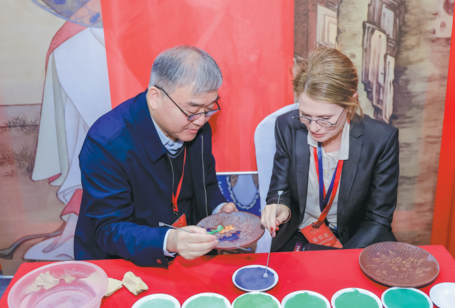
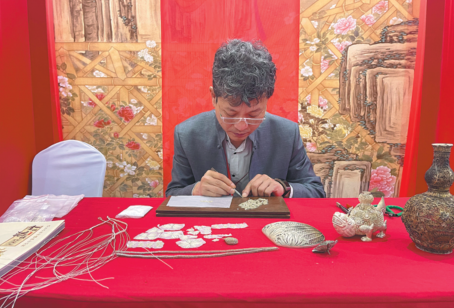

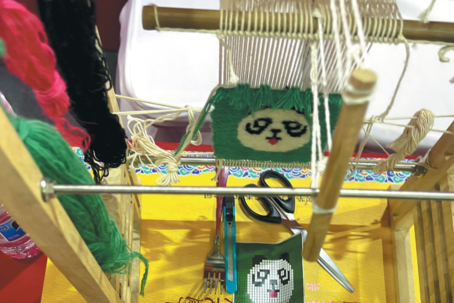
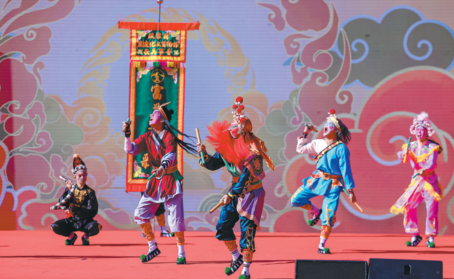
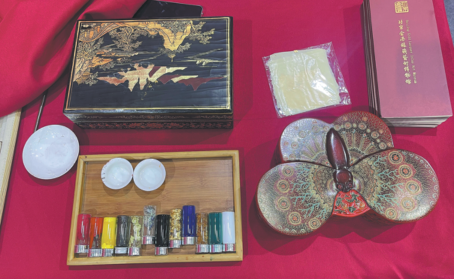
Today's Top News
- Lawmakers' thousands of proposals receive responses
- China warns Japan against interference
- Nation's euro bond sale shows investors' confidence
- No soft landing for Tokyo's hard line
- Commerce minister urges US to increase areas of cooperation
- Strong demand for China's sovereign bonds signals global confidence


















